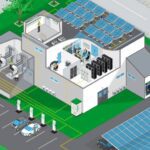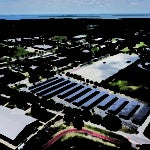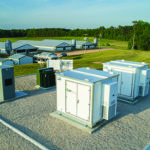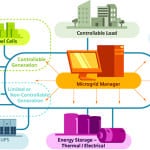The digitalization of power generation includes many new technologies, all designed to increase efficiency, along with reliability and resiliency.
A group of energy industry experts came together Sept. 30 at Experience POWER, the virtual event supported by POWER magazine, to discuss “Microgrids and DERs—Leveraging the Benefits.” The session explored how data analytics and the Industrial Internet of Things come together, and how benefits can be leveraged into microgrids and be utilized more broadly with all distributed energy resources (DERs).
The session focused on what leads to a successful microgrid project, with the speakers discussing what developers have done to integrate DERs, and what technologies have been most useful in various applications.
The panel, moderated by Sam Barnes, COO of Commonwealth Associates, included Tom McDonnell, global industry manager, Power and Energy for Rockwell Automation. McDonnell has more than 30 years’ experience within the automation and power generation industry, with an extensive background in sales, project execution, and strategy.
Mike Murray, COO of Ageto Energy, talked about his company’s mission to accelerate the adoption of renewable energy by simplifying the integration and controls of renewable power systems. He and McDonnell were joined on the panel by Jeffrey Cook, a renewable energy market and policy analyst at the National Renewable Energy Laboratory (NREL). Cook’s focus areas include state and local policy, technology cost reduction, energy resilience, and distributed energy resource aggregation.
DER Aggregation
Cook discussed how to expand photovoltaic (PV) value, with lessons learned from the integration of DERs. “There’s a lot of DERs out there today that can provide grid services, especially when you aggregate them,” Cook said. “We’ve done analysis [at NREL] about how best to aggregate DERs.”
Cook noted load reduction and frequency response as two prime areas of DER aggregation. He discussed how distributed energy resource management systems (DERMS) facilitate the process.

“We want to maximize the value to the grid and to the end-user,” Cook said. He noted that solar power and energy storage comprise the majority of current projects.
Cook said the challenges to power generators, including utilities, using DERMS include software capability, and cybersecurity. “Scaling programs likely requires deploying a DERMS,” he said.
Microgrid Design
McDonnell noted that Rockwell Automation is a global company that gets “a unique view of how everyone is utilizing energy.” He talked about how the traditional utility infrastructure model has changed, as power production becomes more digitalized and decentralized.
“We’ve seen the cost of renewables and low-carbon technologies come down greatly,” he said, which has helped facilitate the development of microgrids using these technologies. “We can really focus on that flexibility and sustainability” when working on asset designs.
“Moving forward we’re going to see microgrids designed to be a really effective standalone power producer,” he said. He noted that energy security, sustainability, and economic value are prime drivers for today’s microgrids, a trend that will continue as more microgrids are deployed.
Like Cook, McDonnell said decarbonization is part of how microgrids are transforming power generation. “It’s really a story about productivity,” he said.
Commissioning During a Pandemic
Murray talked about commissioning microgrids during the COVID-19 pandemic. “What enabled Ageto to continue working during the lockdown?,” he asked, as he then listed some of the protocols his company followed to enable continued commissioning of microgrids.
“Ageto adapted to this new way of doing business. Ageto had multiple projects scheduled for commissioning during March, April, and May, and we had several methods in place to continue our work,” including an “Ageto Gateway” that enabled communications for commissioning as it provided access to the company’s energy resources.
“Remote commissioning does have limits,” Murray said. “You still need people on-site. Ageto was really focused on supporting those local teams.”
He provided case studies, including a look at the Harbledown Island microgrid in British Columbia, near Vancouver. “We got the system going with energy storage in July, and it’s been going well,” he said. “Between the team on-site, and our team here at Ageto, we were able to make that work.”
—Darrell Proctor is associate editor for POWER (@DarrellProctor1, @POWERmagazine).










